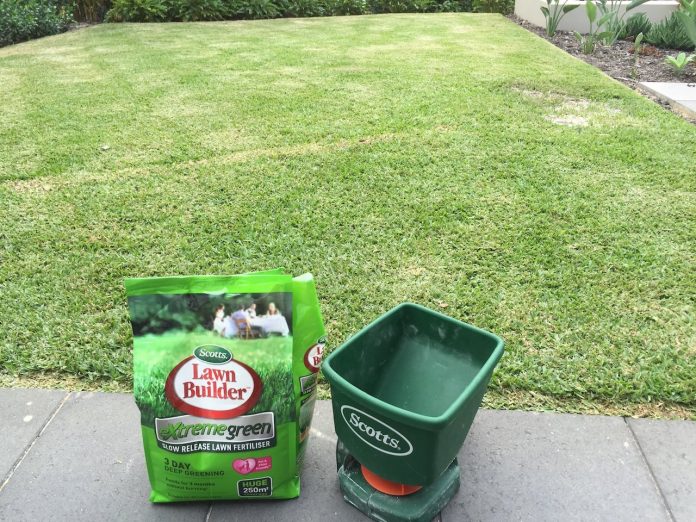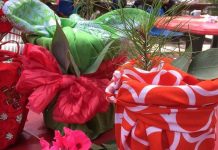Another year is just beginning. This year will hopefully be better for all of Australia and the world. There will still be lots of challenges, struggles and changes ahead of us, but you can always rely on your garden to provide respite from the stresses of our daily life.
You could feast on Christmas and New Year leftovers, but I am sure that gardening will be much better for your health and wellbeing, plus it is a great way to work off those extra kilos.
December finally brought us the expected prolonged summer period of hot, dry weather with temperatures in the 40s and high 30s; many gardens have consequently suffered. So now is the time to give your garden that extra little bit of love and attention.
Work in the garden during the cooler parts of the day – early morning, late afternoon or early evening, avoiding the hottest parts of the day. Don’t forget to slip, slop, slap to protect your skin as you enjoy the clean fresh air and serenity of your green sanctuary.
So here are my garden health care tips to help your garden thrive and flourish in the New Year.
Lawns
• Many lawns around Perth and Western Australia are looking a little brown after the prolonged period of warm temperatures. Check that sprinklers are working efficiently and are not obstructed by grass. Use an old steak knife to cut around the sprinkler heads, then take the heads off and flush them out to remove any debris.
• Wait for a cool couple of days and apply soil wetting agent during the early morning or late afternoon. Both granular and liquid forms such as Ezi-Wet, Everydrop, Grosorb, Waterwise or Wettasoil are effective but must be watered in thoroughly afterwards.
• If your lawn has suffered compaction during the festive period it needs aerating. Use a garden fork or lawn aerator to make holes in the lawn to allow air and water to penetrate down into the grass roots to help relieve compaction.
• Raise the height of your lawnmower to allow the grass to grow a little longer and shade the root system during summer. This will keep it cooler and less prone to drought and sunburn.
• Fertilize your lawn with fertilisers such as Scotts Lawn Builder ‘All Purpose’, Powerfeed ‘LawnFeed’, Bailey’s ‘Brilliance’, Richgro ‘Extra Green’ and Munns ‘Golf Course Green’ to encourage strong healthy growth and cover any worn or bare patches.
Vegetable Patch
• Veggies to plant now include tomatoes, beans, beetroot, capsicum, chillies, cucumber, corn, eggplant and zucchini.
• Cover your crops with fruit fly netting to help keep out troublesome pests including caterpillars, fruit fly and birds.
• Plant your crops in a partially shade position in Perth during January and February or use 30–50 per cent shade cloth to protect your crops from extreme heat.
• Try under planting your tomatoes with a range of the colourful and aromatic varieties of basil including sweet, lime, lemon, spicy globe, red rubin, purple ruffles, cinnamon, thai, perennial red and holy. They are ideal for growing in large pots and containers.
• Feed your vegies fortnightly to encourage quick and nutritious healthy growth. Organic based fertilisers, including Powerfeed, Scotts Performance Naturals All Purpose, Charlie Carp, Baileys Soil Matters and Yates Dynamic Lifter will help to improve the soil structure by feeding the soil microorganisms and the plants at the same time.
• Mulch your crops with a layer of lupin mulch or pea straw to help control weeds and to keep plant roots cool.
• During hot humid summer conditions cucumbers, zucchini, watermelons, pumpkins, rockmelons and squash can be prone to powdery mildew problems. Remove badly affected leaves or spray with Eco Fungicide, Mancozeb or Copper oxychloride.
Fruit
• Feed tropical fruit such as mangoes, avocado, guava, paw paw, figs, citrus and passionfruit with a complete fertiliser every six to twelve weeks to encourage strong healthy and vigorous growth.
• Summer prune most stone fruit including peaches, plums, nectarines, almonds and apricots at the end of February to reduce their vigour, and to remove non-fruiting watershoots. This will help promote fruiting spurs to increase fruit production and size. It also helps to reduce the incidence of bacterial canker on apricots.
• Protect your fruit from fruit fly attack with fruit fly netting, attached securely around the tree trunk right up to harvest. A combination of baits and traps such as Eco Naturalure, Ceratrap, Natures Way Fruit Fly Killer and Richgro Naturally Based Fruit Fly will help to reduce overall fruit fly numbers.
Garden
• Pull out and remove any dried weeds in the garden to reduce the number of viable seeds that could produce more weeds during autumn and winter.
• Mulch your garden beds to reduce water loss and to keep them cooler and with a 5 to 10cm layer of coarse organic mulch such as woodchips, pine bark or lupin mulch.
• Apply a wetting agent to your whole garden and water it in well during cooler weather in February. This will encourage a deeper root system and reduce the run-off. Wash the wetting agent off the plant leaves to avoid burning of the plant foliage.
• Turn on your irrigation system and check for any blocked or damaged sprinklers or any that are impeded by plants causing dry spots.
• Dead head roses, geraniums and salvias and then apply an organic fertilizer to encourage more flowers.
• Apply a seaweed solution to your whole garden every fortnight to help reduce stress from drought, heat and pest and diseases.
• If your plants are a little crispy or sunburnt after the hot weather, avoid cutting them back hard until autumn. The old leaves and stems will provide some extra sunburn protection to buds further down.
To all the readers of the Have a Go News, I wish you all a very happy, healthy and prosperous New Year of gardening in 2021.


































